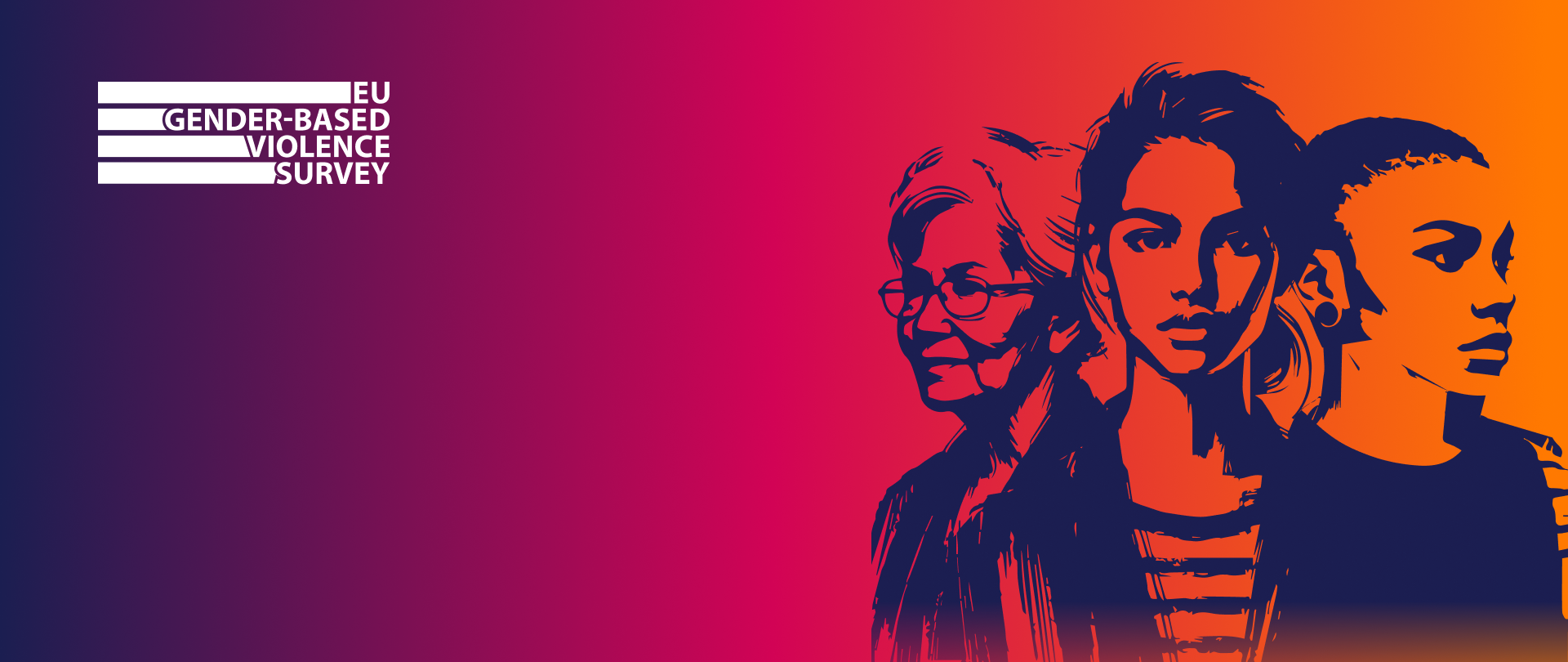Key results 2024
Experiences of women aged 18 to 74 from across the 27 EU member states
Take part in a one-to-one session and help us improve the FRA website. It will take about 30 minutes of your time.



Experiences of women aged 18 to 74 from across the 27 EU member states

Voices of gender-based violence in the EU
Gender-based violence remains a pressing issue in the EU, affecting millions of women across all member states. Despite efforts to combat this issue, a staggering number of women continue to experience physical, sexual, and psychological violence in their lives. This survey sheds light on the prevalence of such violence, helping us understand its scope and urging us to act. As you scroll through the story, you'll discover the most impactful findings from this extensive survey, guiding you to a deeper understanding of the urgent need for continued action, awareness, and support for survivors.
Special thanks are due to the women who shared their experiences, ensuring their voices are heard and documented. Their bravery, combined with the dedication of the interviewers and stakeholders, is the foundation of this valuable research.

“There are no safe spaces for women, free from violence and harassment. Back in 2014, with its first EU-wide survey on violence against women, FRA revealed the extent to which women experience violence every day and everywhere. A decade later, we continue to witness the same shocking levels of violence that affect 1 in 3 women.”
- FRA Director Sirpa Rautio -

Understanding the scale and silence around gender-based violence across Europe
Gender-based violence is a widespread problem across the European Union. It affects women in every country, regardless of their background, age, or income.
Despite years of public awareness and policy efforts, violence remains deeply embedded in daily life — often going unnoticed or unacknowledged.
For many women, this violence happens in private: behind closed doors, in familiar settings, or at the hands of people they know.
Others experience it in public spaces, workplaces, or online. And yet, much of it remains invisible. Women may choose not to speak about it — because they fear not being believed, because they blame themselves, or because they don’t think it will make a difference.
One in three women Across the EU, one in three women reports having experienced physical or sexual violence in her lifetime. This includes experiences ranging from threats and physical assault to rape and other unwanted sexual acts. Some were attacked by a current or former partner. Others by people they barely knew.
While the exact numbers vary between countries, the overall picture is clear: this is not a rare or isolated phenomenon. It is part of everyday life for millions of women. Still, the real figure is likely higher.
Many women choose not to disclose their experiences — even in anonymous surveys. Behind the numbers Every statistic represents a person. Someone whose life has been shaped by violence.
It may have been a single event. Or something that happened many times. It may have been recent or in the distant past. Some women told someone. Others never did. Regardless of the circumstances, the impact can be lasting — affecting health, relationships, and confidence. When we speak about one in three, we are not speaking abstractly.
We are speaking about real women, whose stories deserve to be heard, believed, and addressed with care.



Understanding the scale

When harm comes from someone close
Violence by an intimate partner, whether a current or former partner, is among the most damaging forms of abuse. It takes place in spaces meant to feel safe: the home, shared routines, private moments. That’s what makes it so difficult to escape and so devastating in its impact.
For many women, this violence is not a one-time event. It unfolds over months or years. It may begin with emotional pressure or control - decisions made for her, isolation from friends or family, financial dependence. Later, it may escalate to threats, physical assault, or sexual violence.
Because the abuser is someone known, loved, or once trusted, the violence carries a deep emotional weight. Victims often hesitate to speak out, not only because they fear retaliation, but because they fear they won’t be believed, or that they’ll lose everything if they leave.
This is not just violence, it's entrapment.
Understanding the scale

When the threat comes from outside the home
Violence against women is not confined to private life. Many women are harmed not by partners, but by people they barely know, see occasionally, or encounter in public. It can happen on a night out. In a lift. On a bus. In a classroom or workplace. The perpetrator might be a stranger or a colleague, an acquaintance, or even a family member.
The public setting doesn’t make the experience any less frightening. In fact, it often adds another layer of fear. That no one will intervene, or that witnesses will look away. And once the moment has passed, many women are left unsure of what to do or who to tell.
For some, the violence is physical. For others, it’s verbal, invasive, or sexual. But in every case, it’s unwanted. And it leaves a mark.
Across the EU, one in five women (20.2%) report having experienced physical violence, threats, or sexual violence by someone other than an intimate partner since the age of 15.
This includes 12.9% who experienced sexual violence, and 3.8% who were raped. These figures reflect events that are still not always recognised for what they are: violence.
Whether it’s a coerced encounter at a party or an assault by someone at work, the harm is real, and lasting.
But as with other forms of gender-based violence, many of these incidents are never reported. Women are often left wondering whether others will take them seriously, or whether the behaviour is “serious enough” to mention.
Too often, they stay silent. And the cycle continues.
Violence by non-partners is not always anonymous. In fact, more women report being harmed by someone they knew, even slightly, than by total strangers.
The settings differ. The relationships differ. But the impact is often the same: fear, distress, disruption to daily life, and in many cases, lasting trauma.
This form of violence reminds us that no space is automatically safe; not the classroom, the office, the bus stop. And that tackling gender-based violence means addressing it wherever it takes place, not just in private homes.
Understanding the scale
A persistent and often minimised form of gender-based violence
Sexual harassment in the workplace is one of the most common forms of gender-based violence experienced by women across the EU. It is often dismissed as harmless or overlooked entirely, yet its impact on those affected is serious and long-lasting. From inappropriate comments to intrusive messages and unwanted physical contact, the behaviours vary — but the underlying issue remains the same: a disregard for boundaries, dignity, and respect.
Women who experience harassment at work often find themselves in difficult positions. Speaking up can feel risky. Some worry about not being believed, while others fear losing their job or damaging their career. As a result, many choose not to report what happened, and the cycle of harassment continues — sometimes openly, more often in silence.
The survey shows that this is far from a marginal issue. Nearly one in three women in the EU have experienced sexual harassment at work at some point in their lives. Among younger women, the numbers are even higher. Those aged 18 to 29 report the highest prevalence, suggesting that for many, harassment begins early in their professional lives and shapes their relationship with work from the start.
Perpetrators are most often men, whether they are colleagues, supervisors, or clients. The harassment can take place in offices, in public-facing roles, online, or in any context where power is used inappropriately. While progress has been made in terms of workplace policies and awareness, these figures remind us that harassment remains widespread — and that stronger protections, support systems, and cultural change are still needed.


Understanding the scale
Understanding the barriers to reporting gender-based violence
Despite the scale of gender-based violence, most incidents are never reported. Many women remain silent not because the violence wasn’t serious, but because speaking out can come at a cost. Fear of not being believed, social pressure, or the risk of retaliation all play a part.
This silence isn’t indifference. It reflects a deep failure of trust - in institutions, in support systems, in how society responds.

Change is possible